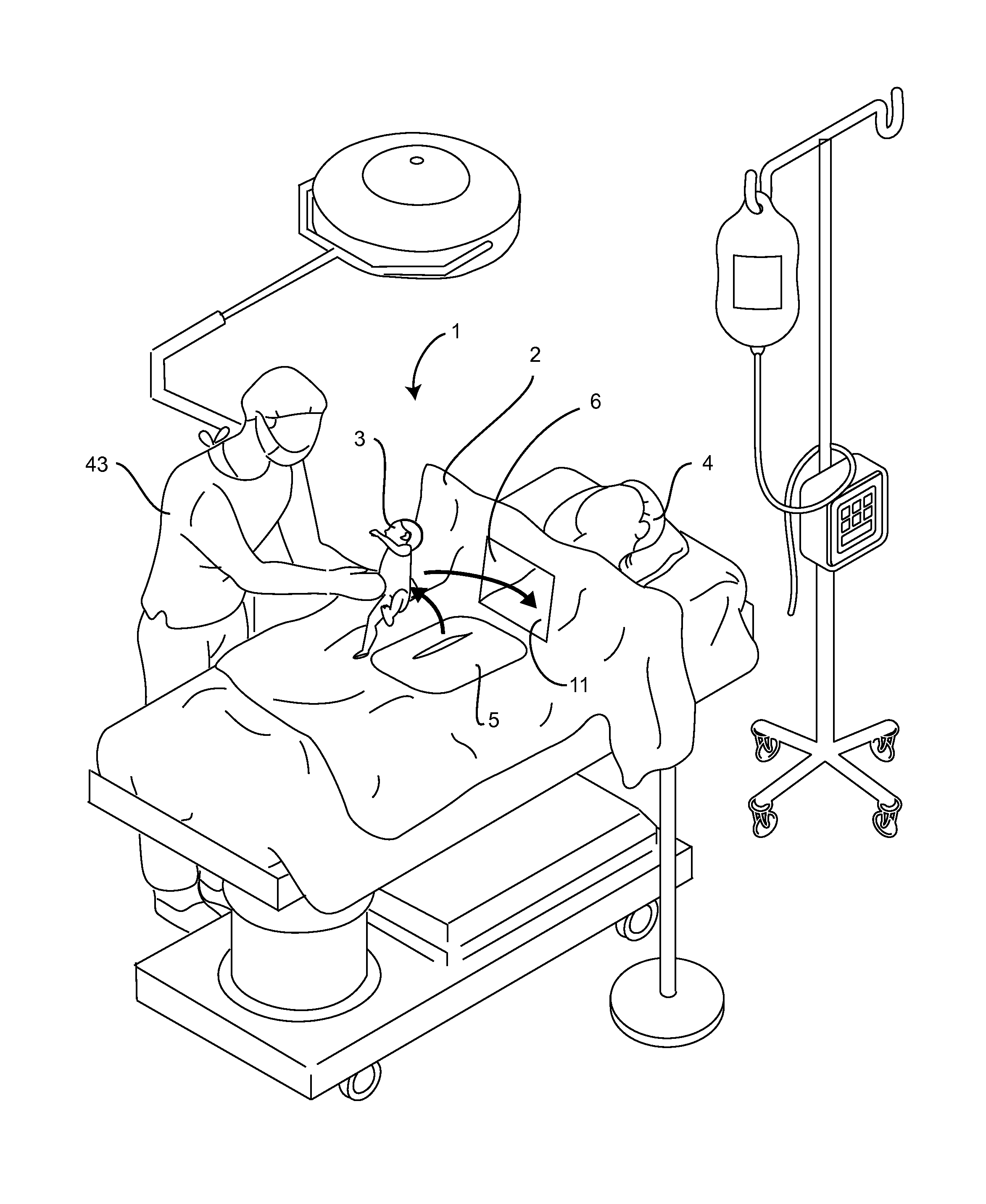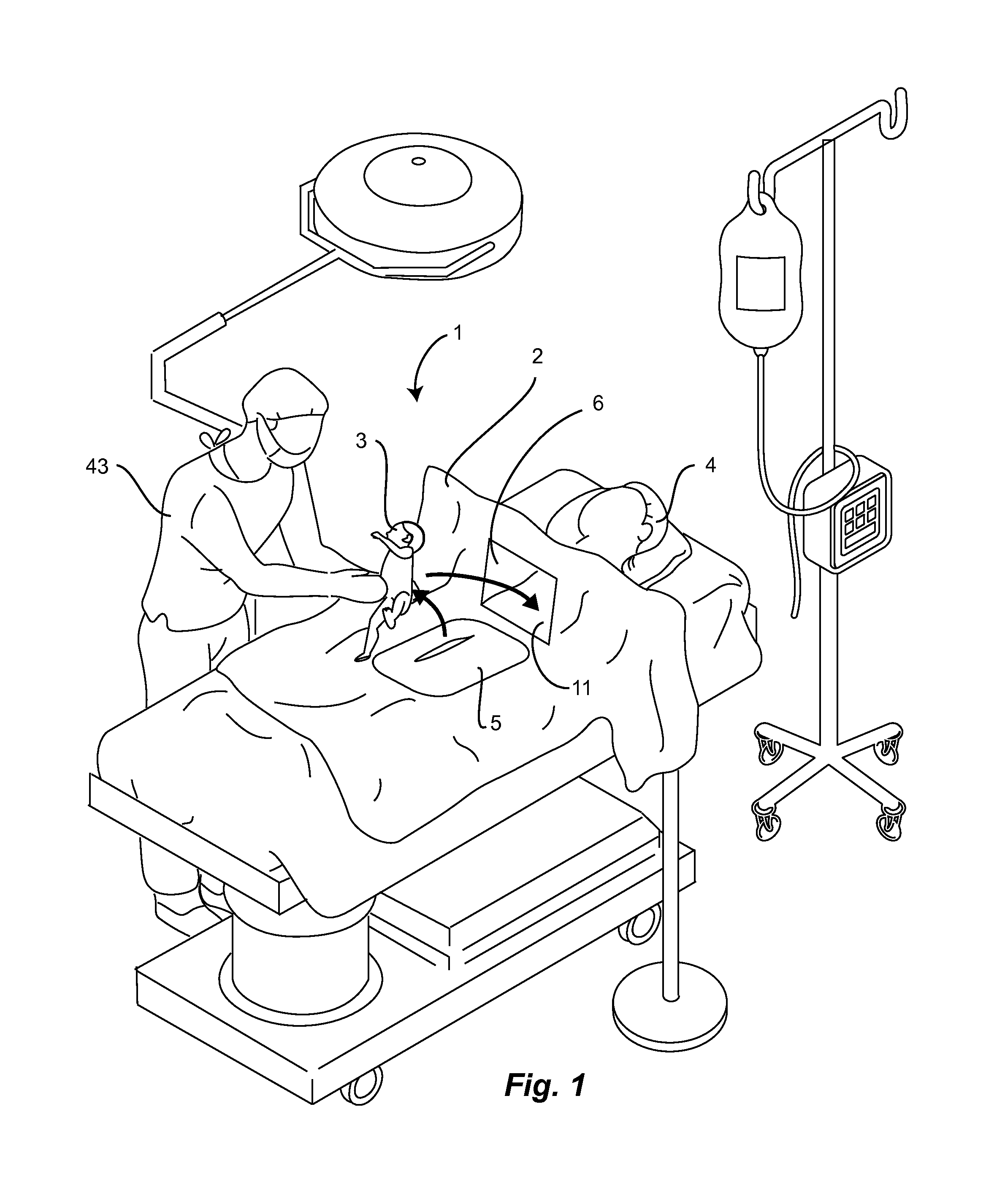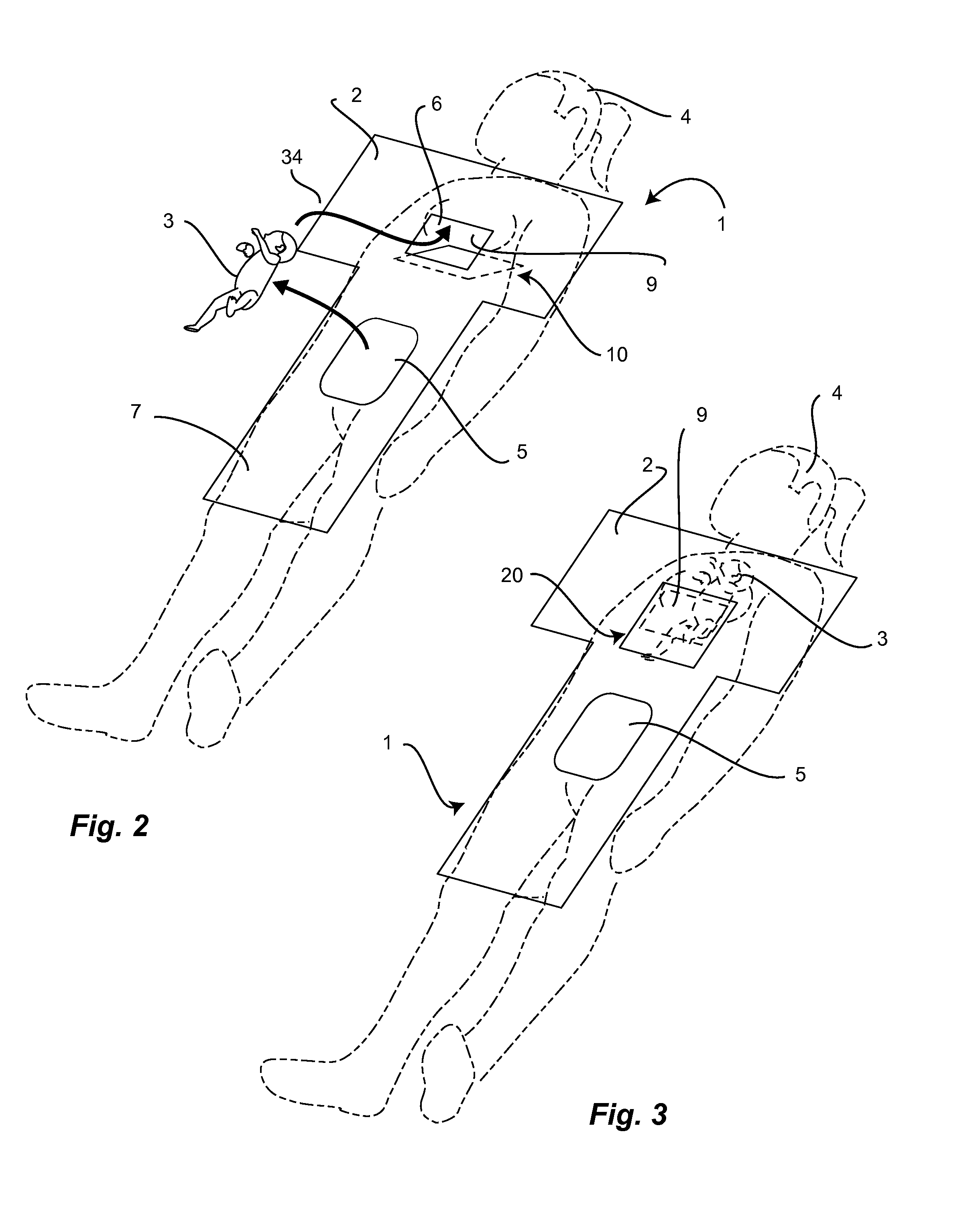Skin-to-skin contact obstetrical surgical drape
a technology of obstetrical drapes and skin-to-skin contact, which is applied in the field of surgical drapes, can solve the problems of significant neonatal stress, limited adoption of this practice, and significant number of mother-infant dyads being denied the opportunity
- Summary
- Abstract
- Description
- Claims
- Application Information
AI Technical Summary
Benefits of technology
Problems solved by technology
Method used
Image
Examples
Embodiment Construction
[0049]As best shown in FIGS. 1-3, a surgical fenestration drape 1 for a Cesarean procedure delivering a newborn 3 from his / her mother 4 comprises a drape sheet 2, a portal 6, a first means for closing 10 the portal 6 and a second means for closing 20 the portal 6. The first means 10 and the second means 20 are used with sterile techniques to maintain a sterile-field barrier defined by a sterile-field side 7 (FIGS. 4 and 5) of the drape sheet 2 opposed by a non-sterile field side 8 (FIGS. 6 and 7). The portal 6 is an opening through the drape sheet 2, generally positioned to the chest-side of a surgical opening 5 located over the abdomen. The purpose of the portal 6 is to give immediate access for skin-to-skin contact (SSC) between the newborn 3 and the mother 4 to receive the benefits enumerated above.
[0050]In the preferred embodiment, the first means for closing 10 comprises a first flap 11, as shown in FIGS. 6 and 7. The first flap 11 also has a sterile-field side 13. The sterile-...
PUM
 Login to View More
Login to View More Abstract
Description
Claims
Application Information
 Login to View More
Login to View More - R&D
- Intellectual Property
- Life Sciences
- Materials
- Tech Scout
- Unparalleled Data Quality
- Higher Quality Content
- 60% Fewer Hallucinations
Browse by: Latest US Patents, China's latest patents, Technical Efficacy Thesaurus, Application Domain, Technology Topic, Popular Technical Reports.
© 2025 PatSnap. All rights reserved.Legal|Privacy policy|Modern Slavery Act Transparency Statement|Sitemap|About US| Contact US: help@patsnap.com



